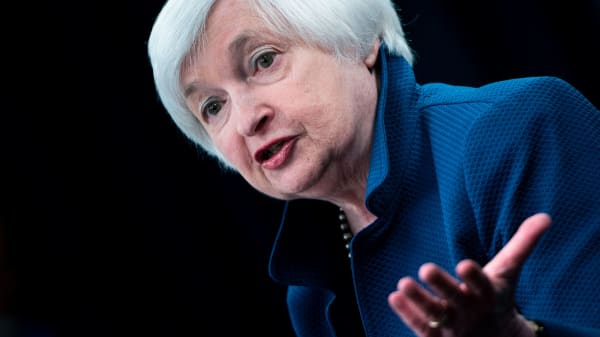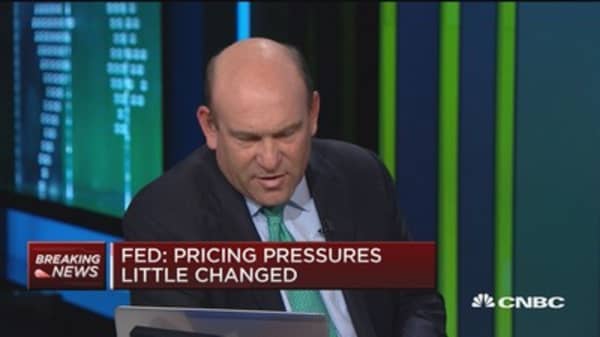The Fed has begun to tighten interest rates as the economy continues improving. The central bank held rates near zero for nearly a decade in the aftermath of the financial crisis.
The majority of the Fed's 12 districts reported that local businesses had a positive outlook over the near term, despite a recent softening in consumer spending.
Two districts — Boston and Chicago — said growth had slowed, while New York said business activity had "flattened out."
More regions cited worker shortages across a widening range of occupations. Employment and wages grew at a modest to moderate pace. The U.S. unemployment rate — currently 4.4 percent — is at a near 10-year low.
Despite tighter labor markets, there's little sign that inflation is heating up.
While rapidly rising costs for some commodities such as lumber and steel "tended to push input costs higher for some manufacturers and the construction sector," the Fed said, "some districts noted falling prices for certain final goods, including groceries, apparel and autos."
The information in the survey, known as the Beige Book, will be used when Fed officials meet June 13-14. The policymakers are expected to raise a key interest rate at that time.
— The Associated Press and Reuters contributed to this report.
Watch: Steve Liesman parses the Fed's Beige Book





